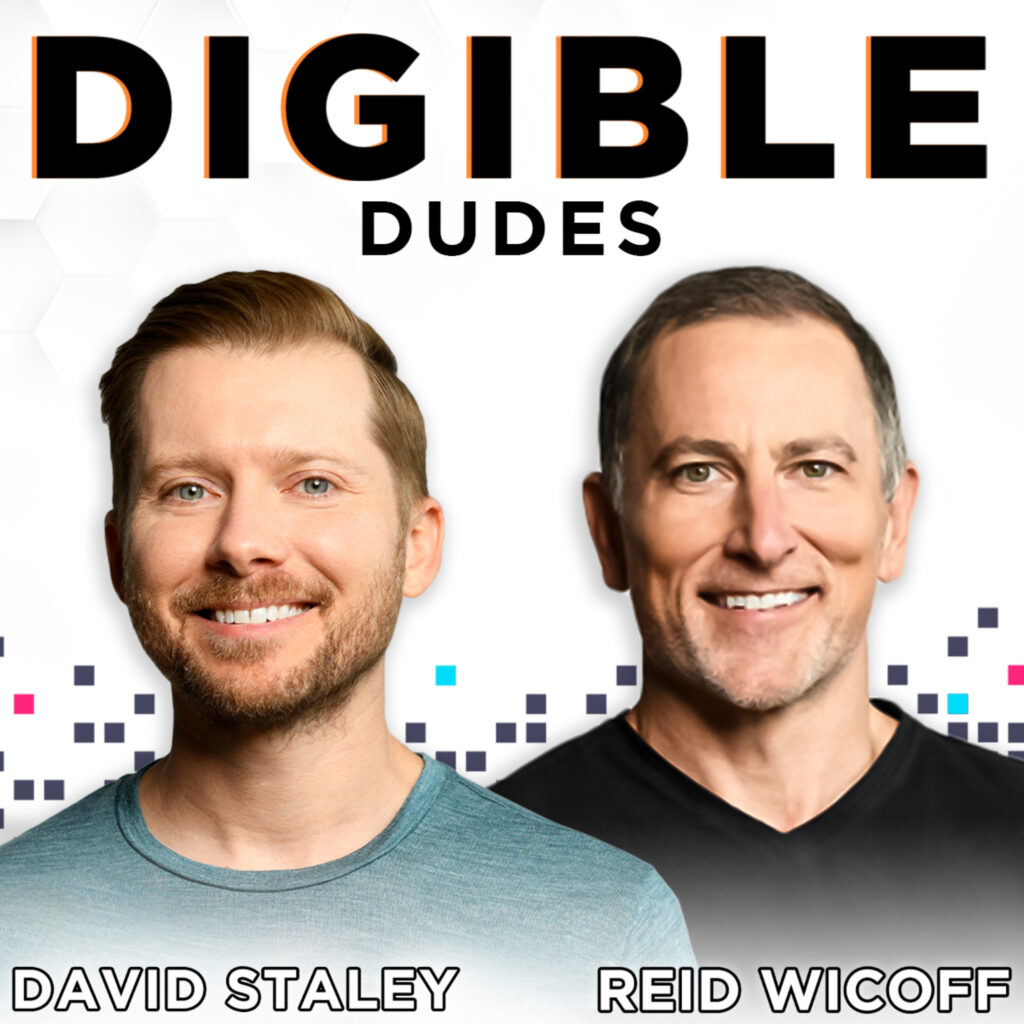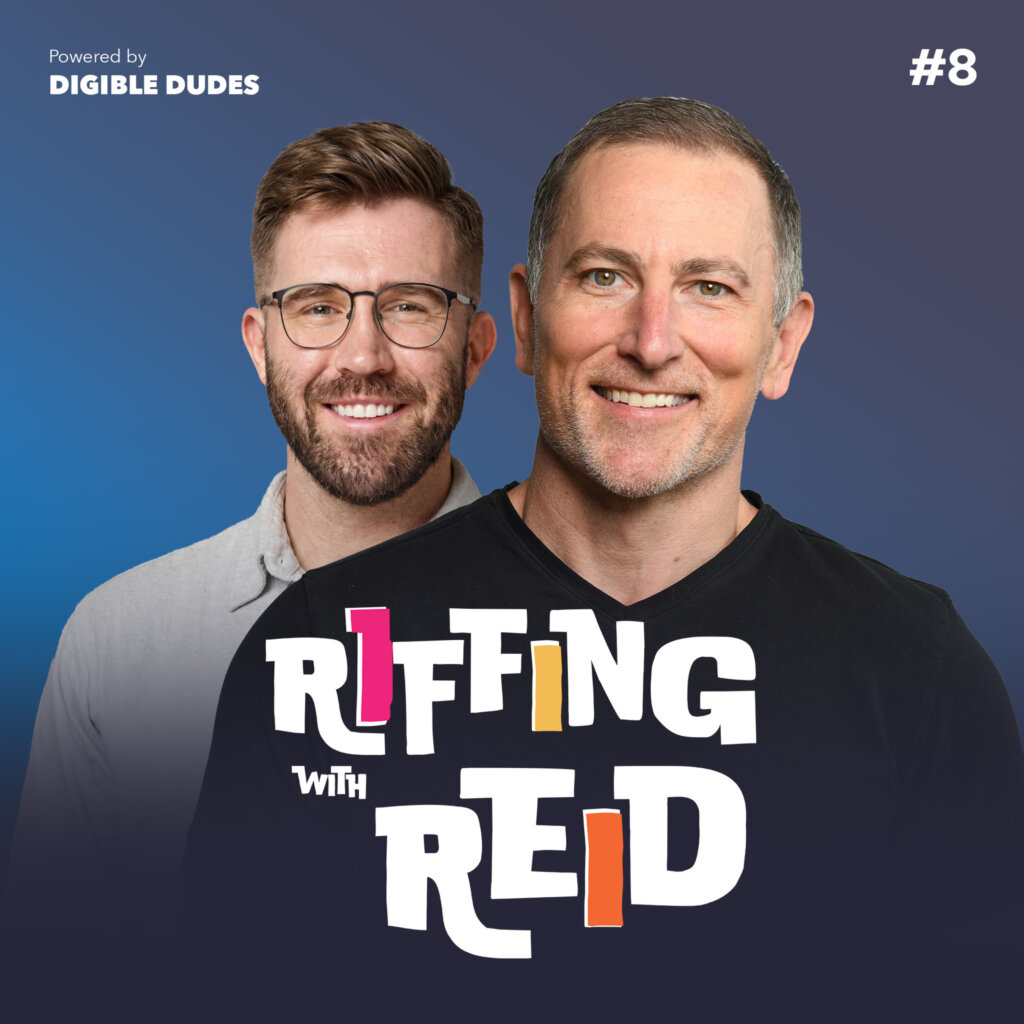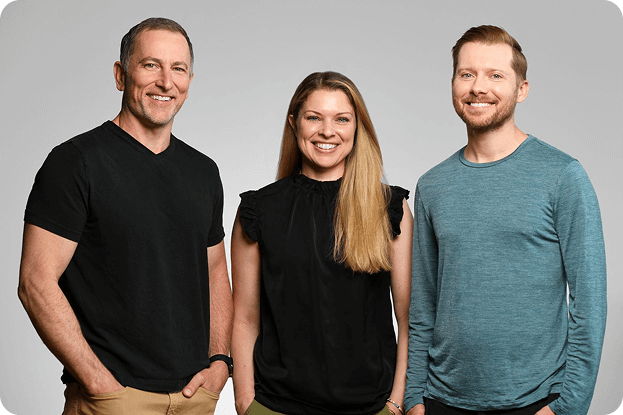Audio Transcription
David: Today, we’re issuing a new podcast format. So this episode or this series we’re calling the Monday Metric and this is all formed from inspiration from a podcast we like here from NPR. So NPR puts out this podcast called the Indicator, and what they do is they pull one economic metric out of the news cycle and talk about that one metric and, well, how it applies to things.
So for example, like ice cream sales are down. What does that mean? Or the yield curve is too high? What does that mean? So in this format today, we’re going to cover click-through rate. So listen on here about a good definition of click-through rate, friction points that Reid and I feel about that metric and some benchmarks on your different platforms.
So what’s a good SEM, Paid Social, Geofencing, Display? What’s a good click-through rate for each of those platforms?
Reid: Buckle up.
David: Alright, welcome to the Digible Dudes podcast. I’m David, I’m Reid, and today we have our Monday metric episode about click-through rate. So Reid, I figured we would start with a quick definition. It may seem a little too on the nose or too simple, but I feel like we have no idea what the one person that listens to this podcast does so we might as well define click-through rate.
So click-through rate is often labelled a CTR and it’s just a metric that measures the number of clicks that you received versus the number of times your ad was shown. So for example, if your ad was shown a hundred times and it was clicked on one time, then your click-through rate equals one percent.
So I figured I would also quickly cover why is it important and then kind of let you let you jump in. Click-through rate is often a KPI that a lot of vendors rely on to say like hey this campaign’s rocking and a lot of reasons that’s sort of like leftover from 20 years ago when there wasn’t really good attribution reporting for digital marketers and so folks just relied on click-through rate to decide if something was good or bad. Really why click-through rate’s important today is because on many platforms click-through rate impacts what’s called your quality score. So I’ll relate this back to Google real quick, but for those that are aware like Google will give your campaign a quality score or QS and that’s supposed to mean like how effective is this ad campaign. Google wants to provide good ads to their clients and if those ads are good and they’re clicked on a lot then Google says like your oh my God my I gotta like put my phone in the toilet.
Reid: Love it. The score is evening out.
David: Yeah. So if you have a good quality score, then you pay less per click on Google and click-through rate is a big component of what makes up your quality score. So that’s why it’s often important on many different platforms.
Reid: Yeah, they position it as relevance and it is important for Google probably, I mean way more than any other platform in my opinion. I still think there’s some value to it when it comes to email campaigns even display campaigns saying that things like that, but basically for me the CTR like lives in the museum of digital marketing or something.
It’s like up on that chart of like evolution. It’s the monkey or the Cro-Magnon like, you know people rightfully have moved on, David said it, it’s kind of the residue of 20 years ago because they didn’t know what else to look at and things have gotten so much more sophisticated, thank God, that we can prioritize the right metrics. So again Google, yes, still matters. I think there’s also something to be said when it comes for click-through rates, like when you’re looking at a really quality list, versus less quality list, and I’m going to use email as an example. So it’s like a high click-through rate on a really poor quality like list is not a good thing and you could get duped there and get excited and chest bump and it’s like you have garbage here and that’s one of the reasons that you actually got a really high click-through rate and on the other side of that you may have a really low click-through rate, but it’s an incredibly valuable list really well vetted etcetera etcetera and you should feel good about that.
So there’s some things that I guess just to consider as you’re evaluating that, but generally speaking I feel like it’s good for rails, you know, like when does the flare gun go off? And so David’s probably going to touch on a few of the metrics that or click-through rates that were accustomed to seeing on some of the other platforms and I think for that it’s a good kind of, you know, basis where it’s like wait a second, you know, my only getting point five percent and is typically two to four percent or why am I getting 10% when it’s typically two to four, so I think that’s where there’s also some value to the click-through rate.
David: So you’ll hear your different vendors talk about click through rate on probably every platform. Except for dun dun dun the ILS’s. Drives me bonkers like the ILS from my experience folks have said the only time they get anything from the ILS besides form fills or calls is if they like gripe a lot and their person pulls a few strings and then they may see impressions, but I would, besides the ILS, you should be thinking about it for email, social, search, like display, everything. It’s probably going to be something that your vendor leans on. I would not use that as my go-to. For me click-through rate, if I go if I was to play an episode of underrated overrated, it would be overrated and I would say like it’s kind of a last resort.
I would first be looking for like how many calls did this generate or form fills did this generate if it’s a lead generation campaign, if it’s more of a middle fun or top of funnel, I’m thinking more website engagement. So the folks that had seen my ad before and either clicked on it or got to the website afterwards, what was their engagement like on the website from how many pages viewed or time on site? But if I did not have access to any of that stuff, finally, I would fall back on click-through rate as my metric, but it’s my you know area of Last Resort.
Reid: Totally agree, I think click-through rate inside of Google Analytics, you know, meaning more probably we’re getting the click streams, but you know how things are converting within the visits that you’re getting to the homepage things like that. That’s where it again bring some value but totally agree with David. It’s a Last Resort for me too, and we don’t want to go and baugher’s so that’s a shot over the bow there at the ILS, you know.
Get with it on your metrics.
David: Yeah get with the 20 year ago metric, please and then we’ll start complaining that that’s all you talk about.
Reid: Right, and just I don’t know if it needs qualification, but I think it’s interesting and we talked about 20 years ago, some of the research I had seen let’s say 15 years ago, I’m certainly dating myself, that was kind of landmark studies was that on a typical display campaign and this is fairly true for other platforms of the like I’ll say but that you will see 80 to 90 percent of all the engagement from that campaign is happening after the click or not within the click, I’m sorry. So meaning, you know, if you have you know, a thousand Impressions you may get 90% of that is after, this is all coming out like crap. The point is is that the engagement happens after after they’ve seen the impression it’s very unusual that they’re actually going to click on it. What I was trying to say is 99.5 percent of display campaigns do not get a click where you sometimes see the higher click-through rate is on what’s called rich media campaigns, and that’s where you can see one to two percent, three to four percent.
But that also was kind of discovered to be misleading because it was just a bunch of like flash ads that people were trying to get the heck away from, so they’re..
David: Trying to click the X but they couldn’t click the X.
Reid: So they’re clicking on that and that still happens on some of those click bait sites where you just can’t get away from the ads and then it drives up the click-through rate.
So just a couple more things to still be aware of.
Yeah, so to sort of back you up on this, what’s it used for? It’s used to see if Iike if my ad creative is effective. If it’s effective, you should expect a better click-through rate, right or maybe it’s also means that your targeting is good or bad but have caution, it’s not something that you want to rely on. It should be sort of the metric of Last Resort. Regardless, if it is something that you’re using as a KPI, we’re going to give out a couple of like industry specific KPIs here now. So for example your paid search campaign on Google, you should expect that your vendor is hitting somewhere between a 4 and a 6 percent click-through rate. This could be closer to eight percent if they’re running a lot of branded campaigns. So I would ask your vendor to break out, what is my branded campaign click-through rate, so those searching for name versus non-brand, non-brand you want to see somewhere between two and four, for your branded you should see, I mean frankly, they should see 20% to 40% but that’s for another episode. For social campaigns you should be thinking one to three percent click-through rate. And the way that social does this is your click-through rate will look higher than the number of visits to your website because a lot of times if you’re running a Canvas ad, Facebook will count as a click that you clicked into the Canvas ad, not that you clicked from the Canvas ad to the website, so that will be inflated. But when you get your Facebook reporting or Instagram reporting just think one to three percent. For geofencing think somewhere between point four and point six. So to Reid’s point 99.5 percent of those ads never get clicked on, people are just aware of it.
And then later they may go to the website via Google search or an ILS or something like that. And then finally for display think about view through rate more than click-through rate. That’ll be another episode. But for display your click-through rate’s going to be like point one point two something in that neighborhood.
Yeah, you said that way cleaner. I’m positioning myself in a rocking chair with my grandchildren talking about the Glory Days of telemarketing and trying to tell them the story of click-through rate and probably having just as much success as I did on this podcast.
Yeah, beautiful.
David: So not that we didn’t mean to do this, but it sounds like you’re also saying overrated.
Yeah a hundred percent overrated.
Cool.
Reid: All right. Well until next Monday.
David: Catch you guys later.
Like what you heard? Click here to listen to the rest of the episodes and catch any new ones coming to your ears soon!








